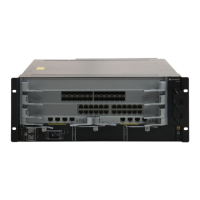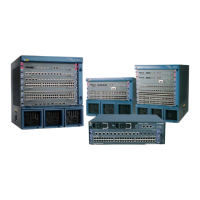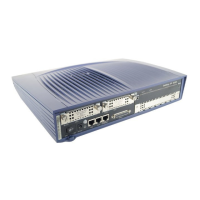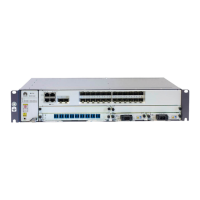#
interface GigabitEthernet3/0/0
eth-trunk 120
#
return
2.8.2 Example for Configuring Link Aggregation in Static LACP
Mode
Networking Requirements
To improve the bandwidth and the connection reliability, configure the link aggregation group
on two directly connected Switches, as shown in Figure 2-6. The requirements are as follows:
l M active links can implement load balancing.
l N links between two Switches can carry out redundancy backup. When a fault occurs on
an active link, the backup link replaces the faulty link to keep the reliability of data
transmission.
Figure 2-6 Networking diagram for configuring link aggregation in static LACP mode
SwitchB
Eth-Trunk 1
SwitchA
Eth-Trunk 1
Eth-Trunk
Active link
Backup link
GE 1/0/1
GE 1/0/2
GE 1/0/3
GE 1/0/2
GE 1/0/1
GE 1/0/3
Configuration Roadmap
The configuration roadmap is as follows:
1. Create an Eth-Trunk on the Switch and configure the Eth-Trunk to work in static LACP
mode.
2. Add member interfaces to the Eth-Trunk.
3. Set the system priority and determine the Actor.
4. Set the upper threshold of the active interfaces.
5. Set the priority of the interface and determine the active link.
Data Preparation
To complete the configuration, you need the following data:
l Numbers of the link aggregation groups on the Switches
l System priority of SwitchA
l Upper threshold of active interfaces
l LACP priority of the active interface
Quidway S7700 Smart Routing Switch
Configuration Guide - Ethernet 2 Link Aggregation Configuration
Issue 01 (2011-07-15) Huawei Proprietary and Confidential
Copyright © Huawei Technologies Co., Ltd.
49

